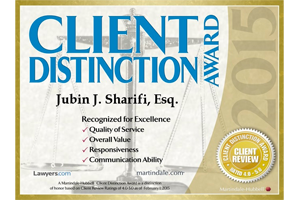In Southern and Northern California
Slip and Falls at Office Buildings
Premises Liability Lawyers Advocating for Victims in the Los Angeles Region
Slip and fall claims are one type of premises liability lawsuit. Premises liability lawsuits involve situations in which somebody is hurt because of improperly maintained or dangerous property conditions. In most slip and falls, a person slips on a substance or object that has been left on the floor. If you suffer a slip and fall at an office building, you should retain an experienced Los Angeles slip and fall attorney. At Sharifi Firm, we offer knowledgeable and aggressive legal representation to accident victims bringing premises liability lawsuits.
Establishing Liability for Slip and Falls at Office Buildings
Slip and falls can happen when you least expect them in any location where an owner has not cleaned up a slippery substance, or if it has not repaired a dangerous condition on a walking surface. If you slip and fall, you may sustain serious injuries like back injuries, traumatic brain injuries, spinal cord damage, soft tissue injuries, and broken bones. Often, people cannot afford all of the costs associated with their injuries unless they bring a civil lawsuit to recover damages.
Property owners and occupiers owe a duty of care toward lawful visitors. As a result, for example, if you are a businessperson who had a meeting at someone other than your employer’s office building, the owner or occupier of that building owes you a duty to keep the property safe by providing warnings and repairing or cleaning up any spills that could cause a slip and fall. In addition to proving the property owner or occupier’s duty toward you, you will need to establish actual and constructive notice of the condition that caused your slip and fall. For example, if there was a soda spilled on the ground, your attorney will need to show that the property owner or occupier actually knew about the soda puddle, or that if it had used reasonable care, it would have known about the soda puddle.
Usually, it is necessary to establish constructive notice because there may not be evidence of actual notice. In most cases, to prove constructive notice, your lawyer would need to show that the dangerous condition that caused the slip and fall was there long enough that a prudent land owner or occupier would have cleaned it up, provided warnings, or repaired the condition. This is sometimes accomplished through evidence like video surveillance set up at the office building. Sometimes a company that leases an office building sets up video cameras, and it is possible to review videotape footage to determine how long the condition existed. When it is an office building, there may be employees of various companies inside the building who may know how long the condition existed, or who may have reported the issue to the company or property owner.
A property owner has a number of defenses that it may raise. Among these is an argument that the dangerous condition was open and obvious. If a danger is so obvious that a person could reasonably be expected to see it, the condition acts as a kind of warning of itself. However, defendants may have a duty to take precautions to protect against the risk of harm from an obviously unsafe condition even if there is not a duty to warn. Courts have found that it is foreseeable that even an obvious danger can cause an injury if the practical necessity of encountering the danger when weighed against the risk is such that the person might choose to encounter it.
Economic and noneconomic damages that you may be able to recover after a slip and fall at an office building include medical expenses, lost wages, pain and suffering, loss of consortium, mental anguish, out-of-pocket expenses, and household services.
Consult a Slip and Fall Attorney in the Los Angeles Region
If you are injured in a slip and fall at an office building, it is important to determine what contributed to the accident. At Sharifi Firm, PLC, our Los Angeles attorneys can provide knowledgeable legal representation. Contact us at (866) 422-7222 or via our online form. We also represent people in cities such as Riverside, Temecula, Rancho Cucamonga, Glendale, Covina, and San Bernardino.







